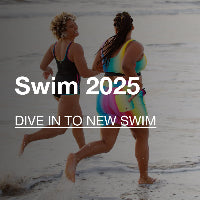Seize The Oar
Since 2013, Seize The Oar has been championing inclusive rowing in the Pacific Northwest. Seize The Oar creates and supports environments where athletes along the ability spectrum can participate and thrive. Coach Tara Morgan works with para-rowers because she believes in the transformational nature of the sport of rowing — its ability to challenge the body, synergize athletes and heal the spirit. Read our interview with her to learn more about Seize The Oar and rowers Amy and Erin's journey to the Head of the Charles.

How did you get started in rowing? Who encouraged you to pursue it?
By the time I was 13 and of age to try rowing, I was already playing any and all sports - thanks to my sweet Pops who taught me to throw a ball when I was five years old. I was also lucky to live in a small town in East Tennessee that had a big national rowing presence. It was something nearly everyone I knew tried and, being tall, I was encouraged by coaches and friends on the team. I only rowed for two seasons and then moved on to other activities, but I never forgot it. Then, after moving to Seattle I was reconnected with the sport by joining my current racing team, Conibear Rowing Club, one of the oldest women’s teams in the country. I’ve been with Conibear for 10 years and a rowing coach for the last 7+ years.

If you had to summarize the vision and mission of STO with one turn of phrase or quote, what would it be?
Seize The Oar is: One Catch, One Finish, One Team. Simple as that. “Catch” and “Finish” are technical terms for critical points in the rowing stroke - when we catch the water with the blade and when we finish the stroke. It has to be in perfect synchronicity for the boat to go the fastest and smoothest. I have high expectations of my team - in terms of both character and performance - and require the athletes that come to Seize The Oar be open, be innovative, be inclusive, get your grit on and let’s race!

How did the concept of adaptive and inclusive rowing (or sports in general) occur to you?
In 2013, an email was forwarded to me from a local athlete and spinal cord injury survivor looking to learn to row. At that point, he had been either ignored or told no by numerous boathouses around the city. I was already a Learn To Row coach, a competitive rower and personal trainer, so I was stoked to see how it would work to adapt this sport I love so much. I’ll be ever grateful to the supervisor Peggy who forwarded the email to me, knowing I’d be game and to that first athlete, Dr. Aaron Bunnell, who connected me to the Veterans Administration and his own hospital, Harborview, where we grew the program. We have grown from one athlete to over a dozen active athletes racing regattas in US and Canada, plus hosting workshops/clinics and outreach programs, in addition to creating educational content to help other programs grow.

What would you recommend to people looking to get involved with sports who may feel discouraged by their ability level? Do you have advice, a mantra or secret password that could aid in surpassing that emotional block?
When a potential athlete comes to me and says, "I want to try rowing but...I’m paralyzed, I’m overweight, I have bad knees, I may be too old, I’ve got Parkinsons or MS, I’ve been on the couch for year, I have a traumatic brain injury" - my response is always the same - “Sure, let’s try it.” We can get you rowing and you’ll be transformed on many levels. For some folks, it’s limited to land work or slow-paced water time for the first season, but you’re bound to get stronger if you stick with it. Just take the first step and reach out to us.

Seize the Oar has been around since 2013, what changes have you seen within the STO community and/or the national rowing community and climate since then?
Seize The Oar has grown exponentially since its inception in 2013. This year, we finally incorporated the company Seize The Oar, home of professional training and clinics, and set up Seize The Oar Foundation to support our inclusion efforts across the region. We are still the only para-competitive program south of Vancouver BC and north of the Bay Area, despite the prevalence of rowing in the Puget Sound. With the Paralympics getting more and more media attention since Rio 2016, we are seeing an increase in interest from athletes and fans alike across the country. There’s still a lot of education that’s needed about how to work with different abilities, especially in terms of equipment like boats and adaptive gadgets. So, we are working on a project now called the Ring of Fire Para-Rowing Society that will bring together the smaller programs and coaches from the Western states to race, train and share ideas. It can only make the para-rowing community bigger and better.

What is the Head of the Charles? How long have Erin and Amy been training for it? What have they been doing to prepare?
The Head of the Charles is the major leagues, or “the show” of rowing. Held in Boston Massachusetts each year on the famed Charles River, home to all the ivy league boathouses among others, it’s 5000 meters or 3 miles of twists, turns, bridges and literally hundreds of strokes. Since 1965, this race has held major legit prominence in the rowing community as the ultimate challenge for racing as well as a super fun weekend with over 10000 rowers from all over the world.


Amy and Erin, calling themselves “Team TinyMighty”, started training together in January for an indoor rowing event called the Hour of Power where you row on an ergometer for an hour and see how far you can get. They basically crushed it and decided they were well-matched in terms of pushing each other and cheering each other on. This year they’ve raced together in multiple sprint races, attended camps, and more recently raced longer events like Tail of the Lake Regatta and Head of the Nicomekl in Canada to prep for the Charles. They both have rowing machines at home as part of Seize The Oar’s erg loan program and spend a lot of time in the gym cross-training. Simply put, they are “BEASTS” (a term of ultimate kudos in rowing).

What advice do you give to your rowers before a big competition?
Eyes up, chin up, be proud and row hard.
There’s so many jobs that a coach has when it comes to prep for and going to a regatta, no matter how big. From schlepping to wiping away tears to wrapping fingers to running around with wrenches. The favorite moment for me is when they’ve pushed off the dock and glance back at our staff with a fierce look that says “WE’RE SO READY. BRING IT.”






